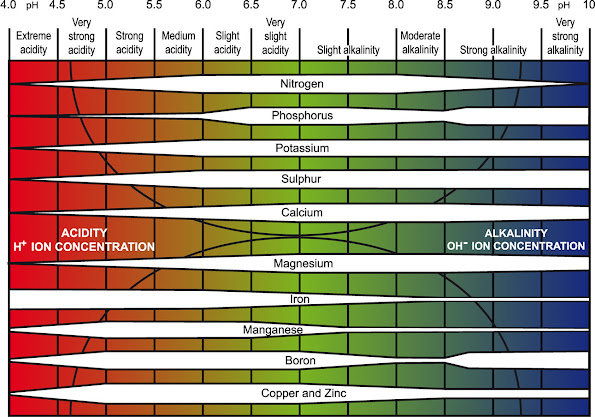In simple terms, it represents the acidity or alkalinity of the soil on a scale from 0-14. Anything lower than 7 is acidic, while anything higher than 7 is alkaline. While most plants prefer slightly acidic conditions (roughly 6.5), a number of flowering plants prefer soil in the range of 4.5-5.5. You should be able to determine what your plants like with a simple internet search.
Why does it matter?
Soil pH indirectly affects plants in many ways. Chief among them is nutrient availability as soil pH directly impacts how a nutrient gets to plants.

Why does it change?
Soil pH fluctuates based on a number of natural factors including rainwater leaching, acids formed from root respiration and acid formation from decomposition. Human inputs like chemical fertilizers can also have significant effects.
Monitoring & Adjusting:
- First things first – test your soil. There are many choices for you test-wise, we carry a variety, but there are also high-end options out there. There are even some DIY techniques out there that you could give a whirl. Once you know the status, you can plan accordingly.
- Need to acidify the soil? Elemental sulfur may be your best bet and it can be top dressed to soil or worked into the top 6”. Tiger 90CR® Organic Sulphur should do the trick. If you prefer using a liquid (or are growing hydroponically), SaferGro pH Down will work wonders.
- Need to boost alkalinity? Look to lime – commonly bought as calcitic limestone or dolomitic limestone. Not only does it raise pH, lime provides the secondary macronutrients calcium and magnesium. We recommend BONIDE® Hydrated Lime.

Submitted by Sterling (with Pam)







No comments:
Post a Comment